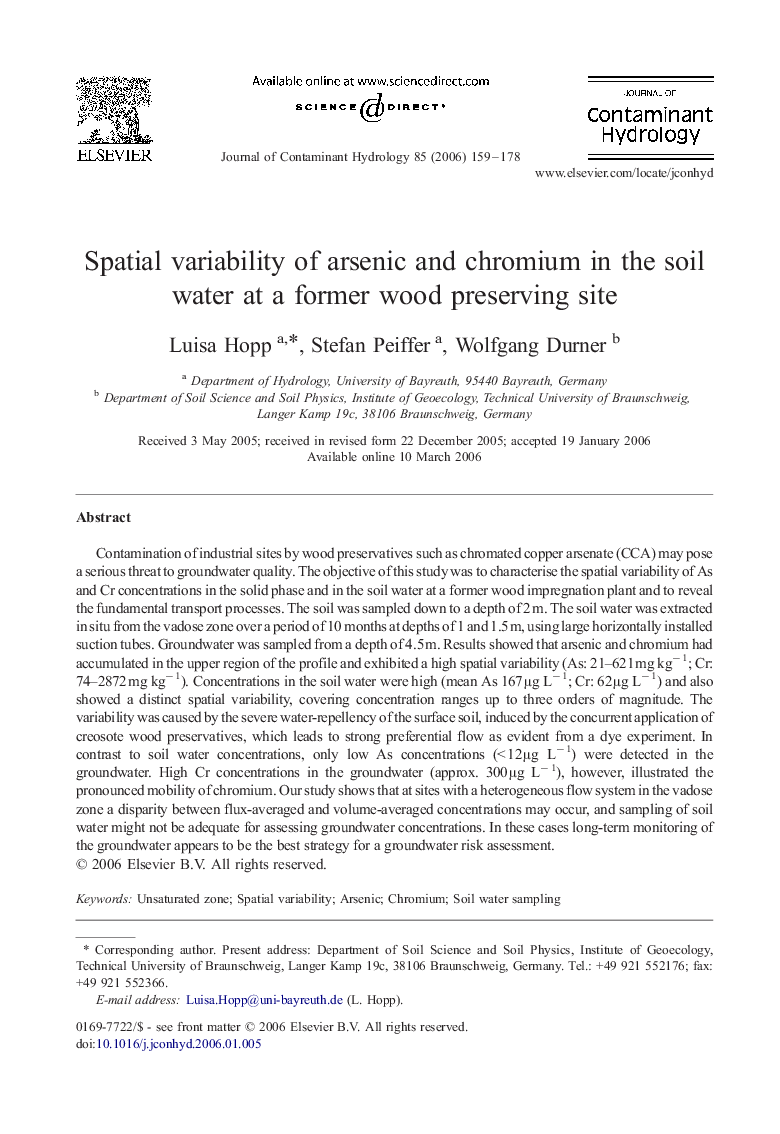| کد مقاله | کد نشریه | سال انتشار | مقاله انگلیسی | نسخه تمام متن |
|---|---|---|---|---|
| 4547633 | 1627136 | 2006 | 20 صفحه PDF | دانلود رایگان |

Contamination of industrial sites by wood preservatives such as chromated copper arsenate (CCA) may pose a serious threat to groundwater quality. The objective of this study was to characterise the spatial variability of As and Cr concentrations in the solid phase and in the soil water at a former wood impregnation plant and to reveal the fundamental transport processes. The soil was sampled down to a depth of 2 m. The soil water was extracted in situ from the vadose zone over a period of 10 months at depths of 1 and 1.5 m, using large horizontally installed suction tubes. Groundwater was sampled from a depth of 4.5 m. Results showed that arsenic and chromium had accumulated in the upper region of the profile and exhibited a high spatial variability (As: 21–621 mg kg− 1; Cr: 74–2872 mg kg− 1). Concentrations in the soil water were high (mean As 167 μg L− 1; Cr: 62 μg L− 1) and also showed a distinct spatial variability, covering concentration ranges up to three orders of magnitude. The variability was caused by the severe water-repellency of the surface soil, induced by the concurrent application of creosote wood preservatives, which leads to strong preferential flow as evident from a dye experiment. In contrast to soil water concentrations, only low As concentrations (< 12 μg L− 1) were detected in the groundwater. High Cr concentrations in the groundwater (approx. 300 μg L− 1), however, illustrated the pronounced mobility of chromium. Our study shows that at sites with a heterogeneous flow system in the vadose zone a disparity between flux-averaged and volume-averaged concentrations may occur, and sampling of soil water might not be adequate for assessing groundwater concentrations. In these cases long-term monitoring of the groundwater appears to be the best strategy for a groundwater risk assessment.
Journal: Journal of Contaminant Hydrology - Volume 85, Issues 3–4, 30 May 2006, Pages 159–178